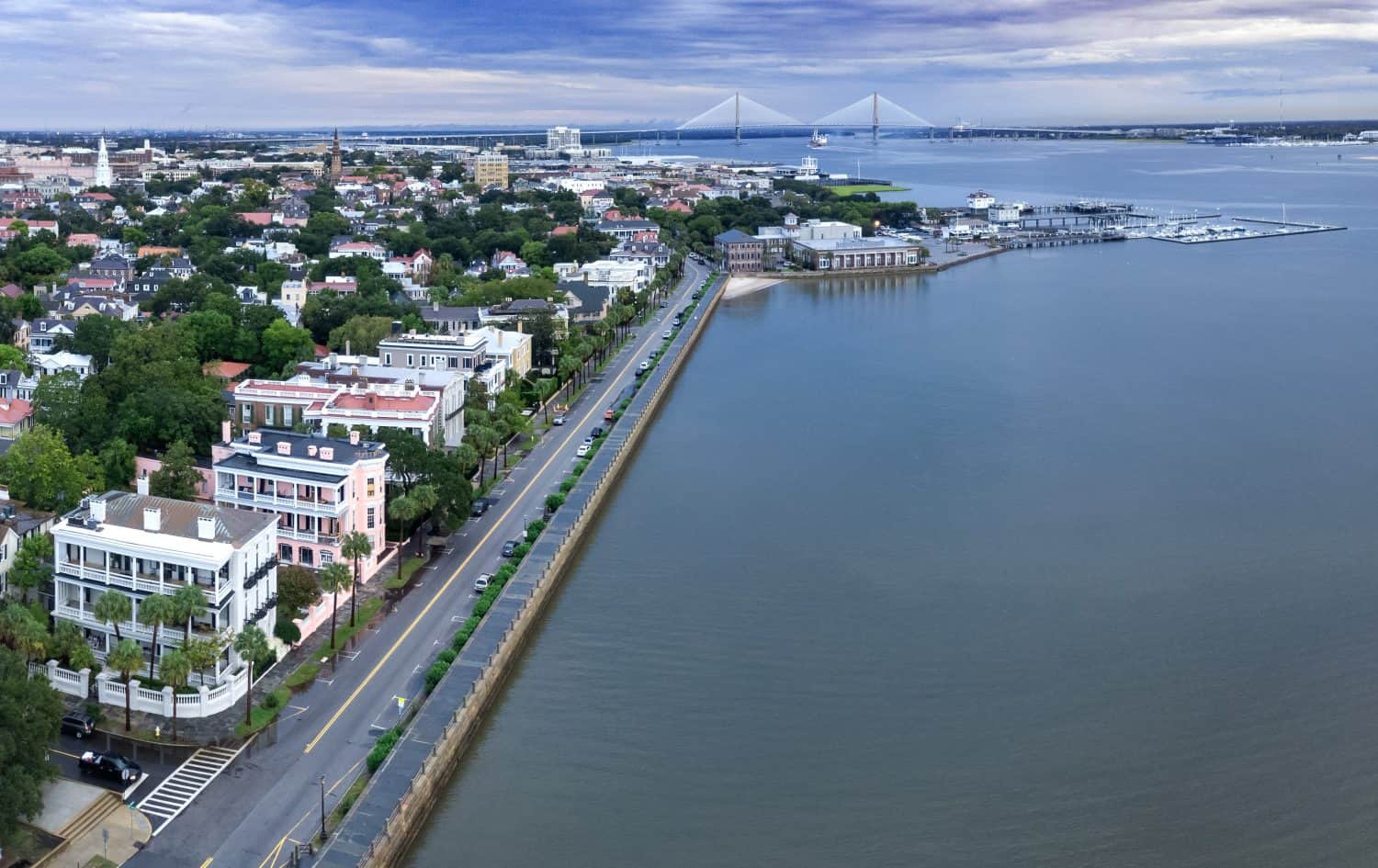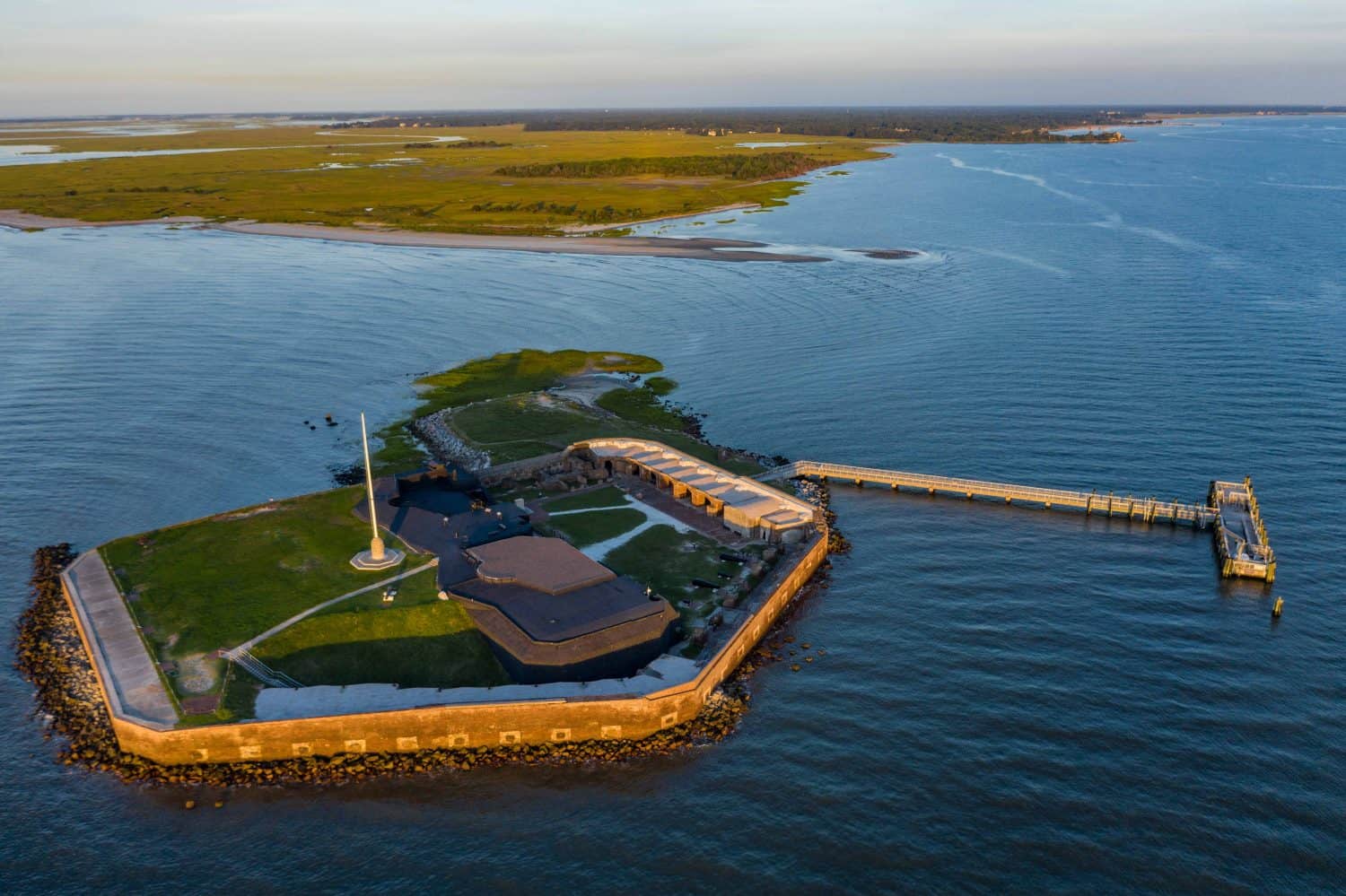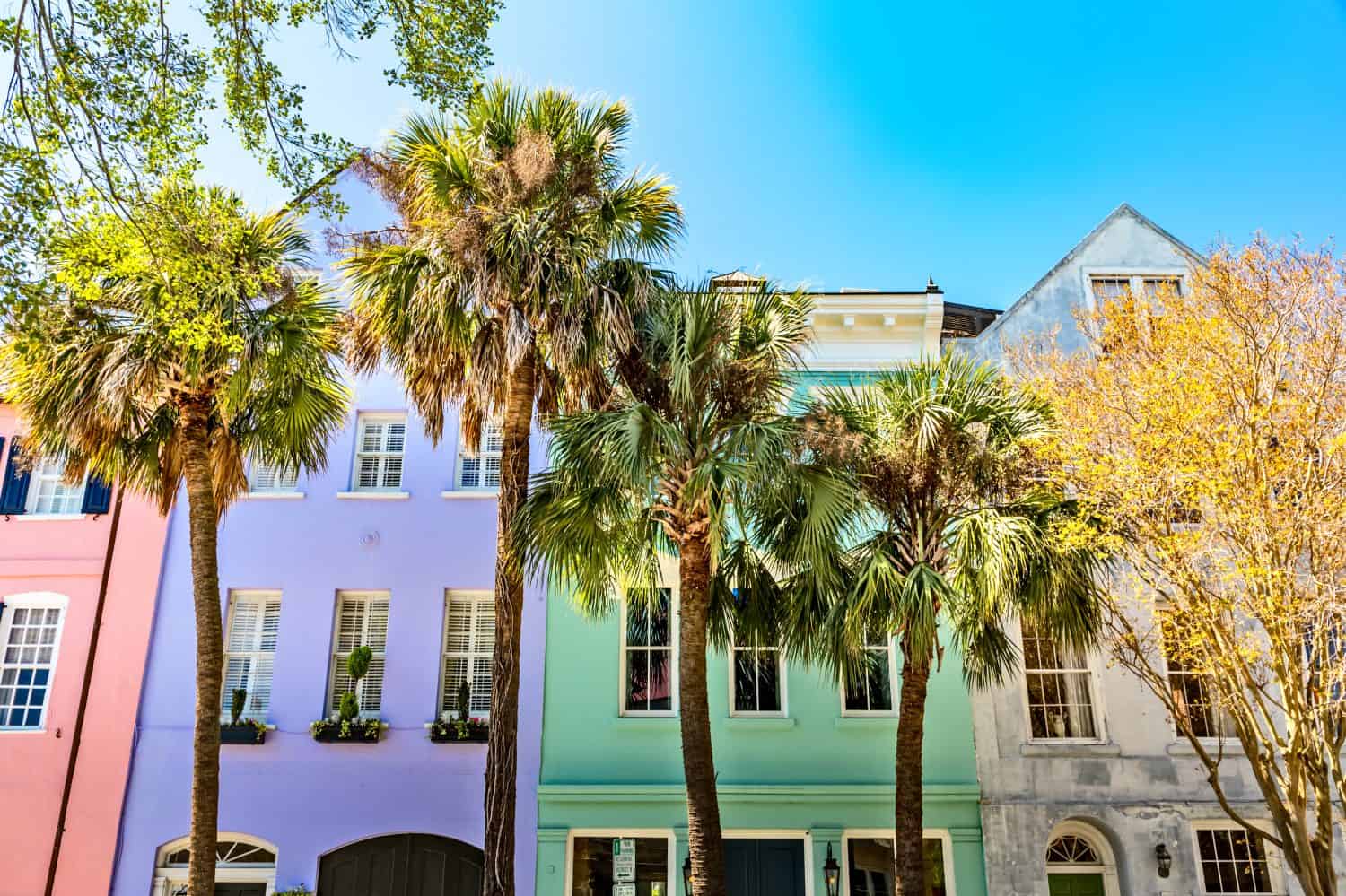Nicknamed the “Holy City” because of its historical tolerance when it comes to religion, as well as the many churches, Charleston is located in South Carolina. The city is famous for being the site of Fort Sumter, which was where the first battle that ignited the Civil War took place. Fort Sumter is located in Charleston Harbor. The harbor is also home to the first submarine attack in history. The reality is that the harbor is as historic as the battle.
But the question remains, where is Charleston Harbor located? Is it safe to swim in the harbor? What lives at the bottom of Charleston Harbor? There is an abundance of animals that live in the harbor, and there are many historical items at the bottom of the harbor, as well. But can you dip your feet in it? Let’s take a look at what lives in Charleston Harbor and other fun facts.
Where Is Charleston Harbor Located?

A dark side of Charleston Harbor is that it was once a major slave trading port when slavery was legal in the US.
©Sean Pavone/Shutterstock.com
Charleston Harbor is located in the city of Charleston, SC, which sits on the Atlantic Ocean. The Ashley, Wando, and Cooper Rivers flow into the harbor, and the water thus gets dispensed into the ocean. The entrance to the harbor from the ocean is straddled by Morris and Sulliven’s Island on either side.
The Charleston Harbor used to be more shallow, at 12 feet, but before the Civil War, the federal government required it to be at least 17 feet. Although the work on the dredging stopped because of the war, afterward it continued. The harbor is now 52 feet, making it the deepest harbor on the East Coast.
Charleston Harbor is the site of the first battle of the Civil War, the Battle of Fort Sumter. The Confederate Army started bombing the fort in April 1861, built on an artificial island. At the end of two days of fighting, the Confederates declared victory and the Union Army retreated. Three years later, the harbor became the site of the first submarine attack in history. The Confederate Army built a submarine called the H.L. Hunley that successfully attacked the USS Housatonic.
What Lives in Charleston Harbor?

Charleston, named after King Charles II, was founded in 1670.
©jdross75/Shutterstock.com
There is a lot of aquamarine life in Charleston Harbor. If you scuba-dived in the harbor, you would find a slew of crustaceans and other small marine animals. When it comes to the bigger marine animals, you can find river otters and dolphins. As for the birds that frequent the area, the most common ones to find are pelicans, seabirds, and seagulls.
Of course, animals aren’t the only things that make Charleston Harbor home. Remnants from the Civil War battles like porcelain and pottery artifacts, cannonballs, bullets, and other knick-knacks are still being found in the depths of the harbor. Besides that, there are remnants from battles that still wash up on the beaches along the South Carolina coast.
Is it Safe to Swim in Charleston Harbor?

Fort Sumter is an artificial island in the harbor that was not yet complete when the battle took place in 1861.
©George A. Kenna/Shutterstock.com
According to Charleston government officials, swimming in the Charleston harbor is extremely prohibited. There are several reasons why. The first reason is that the harbor is still an active port where ships, freighters, cruises, and all types of sea vessels can drop anchor. The discharge from the sea vessels can be dangerous for humans (and animals alike). The second reason why swimming is not allowed and not safe to swim is because of the bacteria levels in the Charleston Harbor.
Creeks all along Charleston that feed into the harbor get dirtied from storms. Animal waste and other pollution flow down into the harbor with bacteria levels that are extremely dangerous. Scientists have been taking water samples and it seems the water quality is really bad. The best thing to do is educate people on being environmentally conscious, organize clean-ups, and ensure the government takes action to clean up the storm waters that drain into the harbor.
Things to Do in Charleston

The Cusabo tribe inhabited the region around Charleston and its harbor before European arrival.
©Martina Birnbaum/Shutterstock.com
While visiting, there are many things you can do in Charleston. Charleston Harbor is just one famous historical landmark that has served an important purpose since the beginning of America’s existence.
For those who love history, this city is just for you. You can visit several plantation sites — the Magnolia Plantation and Gardens, and McLeod Historic Plantation Site — and learn about life before and during the Civil War. Learn all about the first battle that sparked the Civil War by going to the Fort Sumter National Monument. For more comprehensive knowledge of Charleston, you can stop by the Charleston Museum.
If you’d like to saunter throughout the city, a pretty place to walk around is Rainbow Row, where you can see all the colorful houses on East Bay Street. You can also admire the harbor by taking a leisurely walk along Joe Riley Waterfront Park. Finally, if you love nature, visit the South Carolina Aquarium or go on nearby hikes just outside the city to quench your wilderness thirst.
Conclusion
And there you have it, there are many animals and things down in the depths of Charleston Harbor. The harbor is a piece of American history that people can still admire and revel in. But it is also a harbor that is plagued with bacteria from nearby creeks that flow into it.
As you walk along the harbor, think back at the history it has endured. Think of the battles that were fought. Even though you can’t dip your feet into the harbor, you can sit on a bench that overlooks the harbor and Fort Sumter in the distance. As you sit there drinking a coffee, you can hope that the dark past never happens again.
The photo featured at the top of this post is © Leigh Ann Speake/iStock via Getty Images
Thank you for reading! Have some feedback for us? Contact the AZ Animals editorial team.







